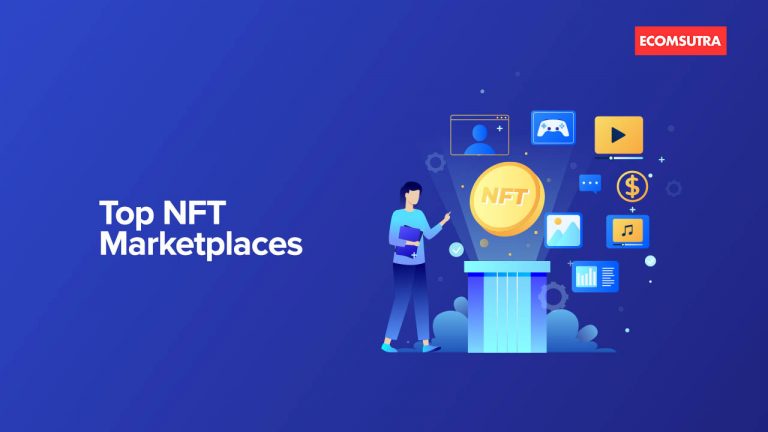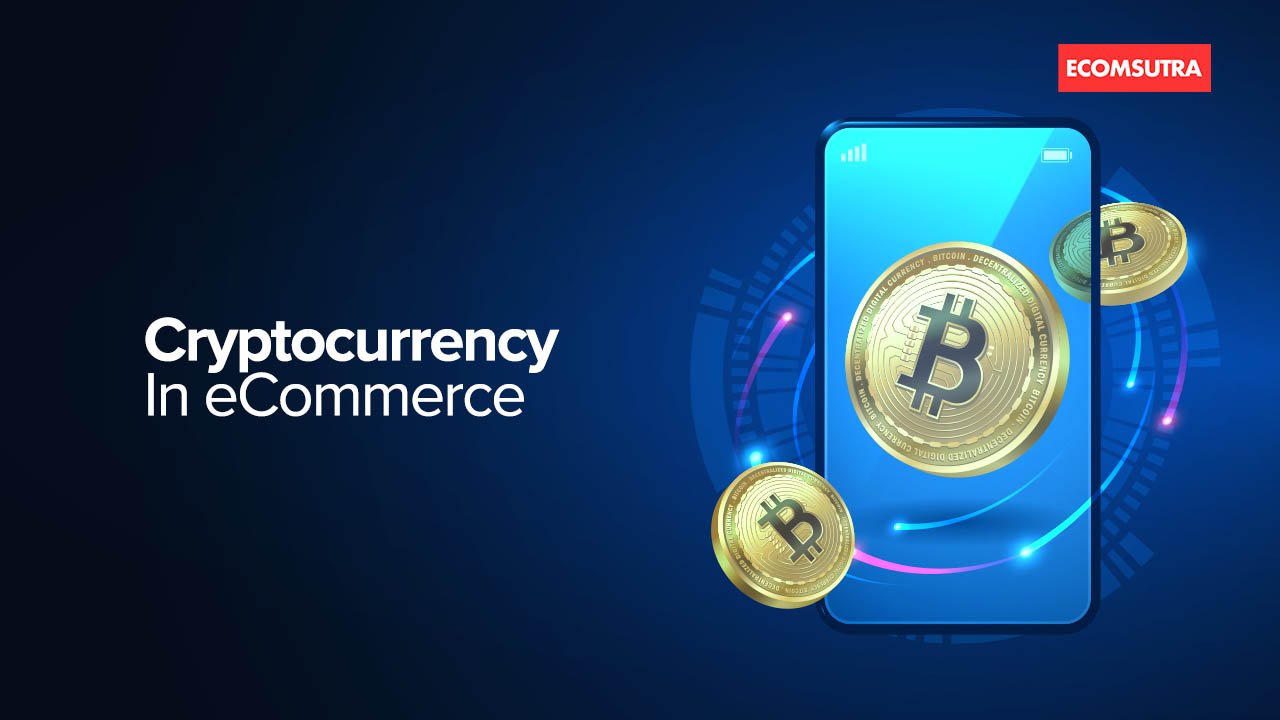Whether you are an artist, investor, or developer, NFT marketplaces enable you to list your digital assets, sell them, or purchase from others – it is just like the eCommerce marketplaces such as eBay & Amazon, where sellers and buyers come together to sell and buy products.
The difference is that NFT marketplaces deal only in digital assets, from text, images, and videos to the entire virtual world.
We at EcomSutra, help online entrepreneurs with selling and marketing products online. Since NFTs are digital products, we also got into it and collated a list of the best NFT marketplaces where you can create and sell NFTs without any hassle.
But first, let’s start with the basics.
How to choose an NFT Marketplace?
First, remember that an NFT (non-fungible token) simply represents ownership of an asset, and marketplaces are places where artists or asset owners mint their assets into NFTs and list them to sell.
Today, many NFT marketplaces exist, built on different blockchains. Moreover, just like eCommerce sites, these marketplaces are niche-specific. Some of them sell only images and videos, while others sell every possible kind of digital asset that can be created.
So, before choosing an NFT marketplace, you should first consider the following factors –
- Kind of NFTs offered – First, decide the type of NFTs you’re interested in buying, selling, or creating, and narrow down the marketplaces that provide the kind of assets.
- Type of tokens supported – Some NFT marketplaces support various tokens, while others are closed marketplaces and utilize a specific proprietary token. So, you want to make sure that you already hold the specific token or have to buy them from an exchange.
- Crypto wallet supported – Based on the blockchain, the marketplace is created or the token supported, every NFT marketplace has its own set of supported wallets. So, make sure that you already have the supported wallet or create one to create an account and complete the transactions.
- Security & history of the marketplace – For the safety of your funds and to ensure that your assets are original and the market is secure enough, check if it has had any security or insider trading issues in the past.
Best 6 NFT Marketplaces in the World
Here are some of the best NFT marketplaces built on popular blockchains, including Ethereum, Solana, Polygon, and others.
1. OpenSea – Largest NFT Marketplace
OpenSea is the biggest NFT marketplace that allows users to buy and sell different types of digital assets like art, music, trading cards, music, virtual world, collectibles, utility, etc. It was launched on the Ethereum blockchain network and used ERC-721 & ERC-1155 to meet the NFT standards.
The interface is user-friendly, and you’ll get the complete set of resources from their help center to get started. You can access all NFTs, view statistics and top-performing NFTs for the past 24 hours, 7 days, and 30 days.
All you have to do is connect your wallet to OpenSea, create your collection by adding required details, mint NFTs and list them. You can choose different options like auctions, fixed-price listings, and declining-price listings for selling.
OpenSea grants access to its marketplace infrastructure for free, which means it’s completely free to use the services in the platform. However, as compensation for this, 2.5% of each sale will go to OpenSea.
2. Foundation – Popular Ethereum-based NFT Marketplace
Foundation is another popular Ethereum-based NFT marketplace that builds rapport between artists, creators, and collectors. It is simple to use and beginner-friendly for artists to create NFTs without the need for technical knowledge.
It features the best artworks and creators on the platform, helping them build a loyal following and grow the value of their arts. You can find trending auctions, collections, and featured artworks right on their homepage.
Foundation currently supports MetaMask and WalletConnect as wallets to signup and make transactions for selling, purchasing, and minting the NFTs.
The best part of Foundation is that it allows the original creators to earn a royalty on their NFT for lifetime. That is, once an NFT is sold, a 10% from the final sale fee is sent as royalty to the original creator, and a 5% service fee is also charged.
3. Rarible – Community-owned NFT marketplace
Rarible is another popular NFT marketplace that enables buying and selling of unique assets like art, photography, games, metaverse, music, domains, memes, etc.
You’ll get the feeling of a busy NFT environment when you visit Rarible. You can view top collections, hot bids, top sellers, live auctions, hot collections and explore based on different categories, collections, sale types, and price ranges.
To add more authenticity, Rarible provides a verified badge for dedicated collectors and creators. You must fill out their form, and if the credentials are proven to be original, the verification badge is awarded.
Another aspect worth mentioning is the Rarible Governance System. This is mainly done to evolve the platform into a fully decentralized autonomous organization where users get the rights to make their decisions. It also helps in fostering a community where the people’s voices are heard.
To extend this potential, the Rarible users also get a $RARI token designed to reward active platform users. By incentivizing the participation, users will get motivated to perform NFT transactions on the platform, which boosts productivity.
3. SuperRare – Artwork NFT Marketplace
As the name shows, SuperRare is an Ethereum-based (ERC- 721) authentic marketplace that enables users to trade unique, single-edition digital artworks. It has an invite-only system that allows chosen artists to display and sell only tokenized artwork, thus making the platform highly credible.
SuperRare also has a social network on top of its marketplace. Users can view the number of favorites and views and see the owner’s details, representing the transparent record of ownership.
SuperRare is currently in the process of onboarding a small number of artists, but you can fill the form to submit your artistic profile. It charges 3% transaction fees for the buyers, and the primary & secondary sale commissions are 85% and 10%, respectively.
4. Solanart – Solana-based NFT Marketplace
Solanart is the first NFT marketplace of Solana. It gives you instant access to digital collectibles and lets you buy & sell NFTs through different collections and artists. Its native token called $SOL can be purchased from popular exchanges like Binance, Coinbase, FTX, Kraken, etc.
Solana strives to become one of the most used smart contract platforms with faster transaction times due to its high block time. The Solanart marketplace is still in beta mode, so we can expect more exciting features to roll on in the future.
You can view the statistics for all collections and other data like daily sales, total sales, daily SOL volume, and total SOL volume. Also, some of the NFTs are likely to launch, but you’ll get access to the new and top collections in the marketplace.
Solanart charges a 3% marketplace fee on every transaction. So ensure that you possess enough SOL to manage the transaction fee before listing it on the platform.
5. Nifty Gateway – USD-based NFT marketplace
Nifty Gateway is a popular NFT marketplace owned by the Gemini Exchange, a trusted cryptocurrency exchange. It is slightly distinct from other marketplaces as it teams up with top artists to create limited-edition NFTs. These NFTs are accessible only for a limited time.
It allows users to buy and sell Nifties in US Dollars, so you don’t need to buy other crypto coins like Ethereum to make the purchase. However, it lets you display your Nifties, as well as withdraw them to external wallets, or deposit NFTs from external wallets into your collection.
Nifty Gateway charges a 5% transaction fee plus 30 cents from every secondary sale. This is mainly done to manage the credit card processing fees and to keep the platform running.
6. NFTone – Tron-based NFT Marketplace
NFTone is a Tron-based NFT marketplace that enables you to buy and sell unique digital collectibles securely. Currently, the platform supports TRC721, but in the future, it will be upgraded to TRC1155 as soon as it is enabled in the TRON network system.
To access NFTone, you must set up your TronLink wallet by following the instructions. Next, fill in all the required details and click “be a publisher.” You need to upload a few artwork samples, bio, email, and click Submit.
Once this is verified, you can start listing your NFTs for sale.
Unlike other NFT marketplaces, NFTone incurs a lower commission fee. It receives a commission only after the actual sale is met. After a deal is closed, it charges only 2% of the deal amount.
Wrapping Up
NFT world is in its infancy and it seems like there is a lot more to explore. So, whether you are a digital artist looking for ways to monetize your artworks or an art collector, NFT is something you should be looking into.
Also, as an artist, if you want to create your own website to sell NFTs based on your brand value, you can read our guide on selling NFTs on Shopify to get started.
I hope this article gave you an overview of some of the best NFT marketplaces in the world and how you can start using them to sell and buy NFTs. If so, do share on social media and help others explore this exciting world of NFTs.



